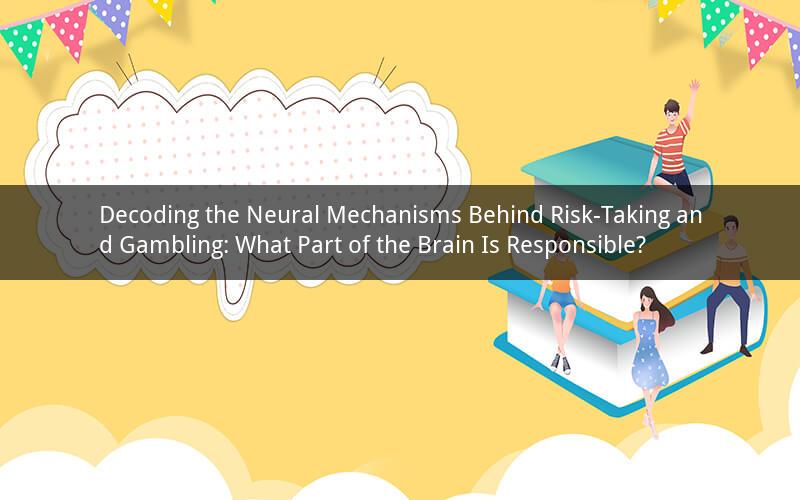
The human brain is a complex organ, capable of a myriad of functions, from processing emotions to making decisions. One fascinating aspect of human behavior is the tendency to engage in risky activities, such as gambling. Understanding the neural mechanisms behind this behavior can shed light on the factors that drive individuals to take risks and may help in developing strategies to mitigate the negative consequences of excessive gambling. This article explores what part of the brain controls risk-taking and gambling, and how it contributes to our understanding of human behavior.
The prefrontal cortex (PFC) is often considered the brain region responsible for decision-making and risk assessment. Located at the front of the brain, the PFC plays a crucial role in evaluating the potential benefits and drawbacks of a particular action. When it comes to gambling, the PFC is involved in monitoring the potential rewards, evaluating the risk involved, and making a decision based on this information.
However, recent research suggests that the PFC is not the sole brain region responsible for risk-taking and gambling. Another critical player in this process is the nucleus accumbens (NAc), a brain region located in the ventral striatum. The NAc is a key structure in the brain's reward system and is involved in processing pleasurable experiences, such as winning money while gambling.
When a person engages in gambling, the NAc becomes highly active, releasing dopamine, a neurotransmitter associated with pleasure and reward. This dopamine release reinforces the behavior and encourages the individual to continue engaging in risky activities. As a result, the NAc becomes a powerful motivator for gambling behavior, driving individuals to take risks in search of rewards.
Another brain region involved in gambling is the insula, a part of the brain that is associated with the processing of emotions and pain. The insula is activated when individuals are exposed to negative emotions, such as fear or anxiety. When a person is engaged in gambling, the insula may become active, signaling the potential negative consequences of their actions.
Moreover, the amygdala, a brain region involved in processing emotions and the formation of memories, also plays a role in gambling behavior. The amygdala is activated when a person experiences fear or excitement, and this activation can influence their decision-making process. For instance, the amygdala may lead individuals to take greater risks when they are in a state of excitement or fear, as these emotions can override the PFC's ability to assess the potential risks involved.
The relationship between these brain regions and gambling behavior is complex and interconnected. The PFC, NAc, insula, and amygdala all work together to influence an individual's decision-making process when it comes to engaging in risky activities. Understanding the interplay between these regions can help us gain insights into the neural mechanisms behind risk-taking and gambling.
1. What is the role of the prefrontal cortex in risk-taking and gambling?
The prefrontal cortex plays a crucial role in evaluating the potential benefits and drawbacks of a particular action, including gambling. It helps individuals make decisions based on this information and is involved in monitoring the potential rewards and risks involved in gambling.
2. How does the nucleus accumbens contribute to gambling behavior?
The nucleus accumbens is a key structure in the brain's reward system. It becomes highly active during gambling, releasing dopamine, which reinforces the behavior and encourages individuals to continue engaging in risky activities.
3. What role does the insula play in gambling behavior?
The insula is involved in processing emotions and pain. It may become active when individuals are exposed to negative emotions, such as fear or anxiety, and can signal the potential negative consequences of their gambling behavior.
4. How does the amygdala influence gambling behavior?
The amygdala is responsible for processing emotions and the formation of memories. It can be activated by fear or excitement, which may influence an individual's decision-making process and lead them to take greater risks while gambling.
5. How are these brain regions interconnected and what does this mean for our understanding of gambling behavior?
The prefrontal cortex, nucleus accumbens, insula, and amygdala are all interconnected and work together to influence an individual's decision-making process when it comes to gambling. This interplay provides insights into the neural mechanisms behind risk-taking and gambling behavior, highlighting the complex nature of human decision-making.
In conclusion, the neural mechanisms behind risk-taking and gambling involve multiple brain regions, each playing a distinct role in the decision-making process. Understanding the interactions between these regions can help us gain a better understanding of the factors that drive individuals to engage in risky behaviors and may assist in developing strategies to mitigate the negative consequences of excessive gambling. As research continues to uncover the intricacies of the human brain, we will undoubtedly gain a more comprehensive understanding of the factors that influence our behavior, including the urge to take risks and engage in gambling.